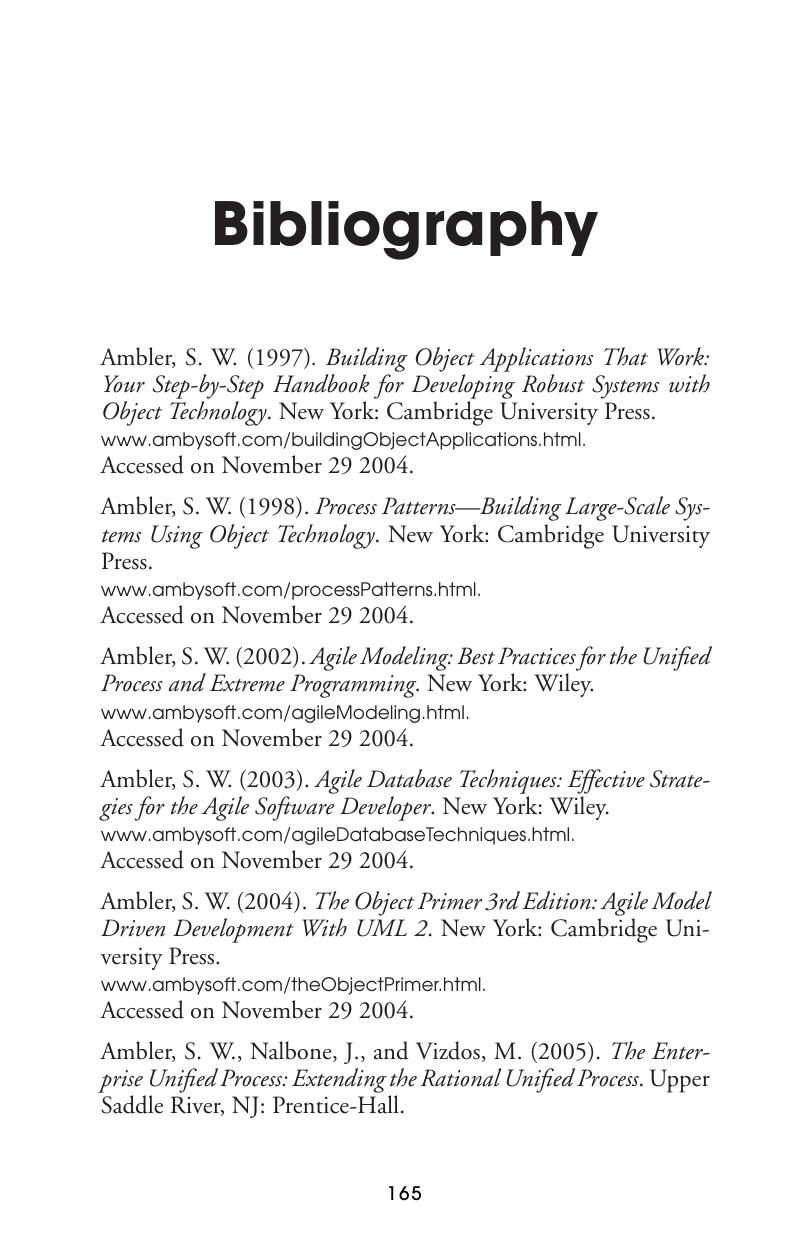Book contents
- Frontmatter
- Contents
- Preface
- 1 Introduction
- 2 General Diagramming Guidelines
- 3 Guidelines for Common UML Modeling Elements
- 4 UML Use-Case Diagrams
- 5 UML Class Diagrams
- 6 UML Package Diagrams
- 7 UML Sequence Diagrams
- 8 UML Communication Diagrams
- 9 UML State Machine Diagrams
- 10 UML Activity Diagrams
- 11 UML Component Diagrams
- 12 UML Deployment Diagrams
- 13 UML Object Diagrams
- 14 UML Composite Structure Diagrams
- 15 UML Interaction Overview Diagrams
- 16 UML Timing Diagrams
- 17 Agile Modeling
- Bibliography
- Index
- References
Bibliography
Published online by Cambridge University Press: 17 December 2010
- Frontmatter
- Contents
- Preface
- 1 Introduction
- 2 General Diagramming Guidelines
- 3 Guidelines for Common UML Modeling Elements
- 4 UML Use-Case Diagrams
- 5 UML Class Diagrams
- 6 UML Package Diagrams
- 7 UML Sequence Diagrams
- 8 UML Communication Diagrams
- 9 UML State Machine Diagrams
- 10 UML Activity Diagrams
- 11 UML Component Diagrams
- 12 UML Deployment Diagrams
- 13 UML Object Diagrams
- 14 UML Composite Structure Diagrams
- 15 UML Interaction Overview Diagrams
- 16 UML Timing Diagrams
- 17 Agile Modeling
- Bibliography
- Index
- References
Summary

- Type
- Chapter
- Information
- The Elements of UML™ 2.0 Style , pp. 165 - 168Publisher: Cambridge University PressPrint publication year: 2005



